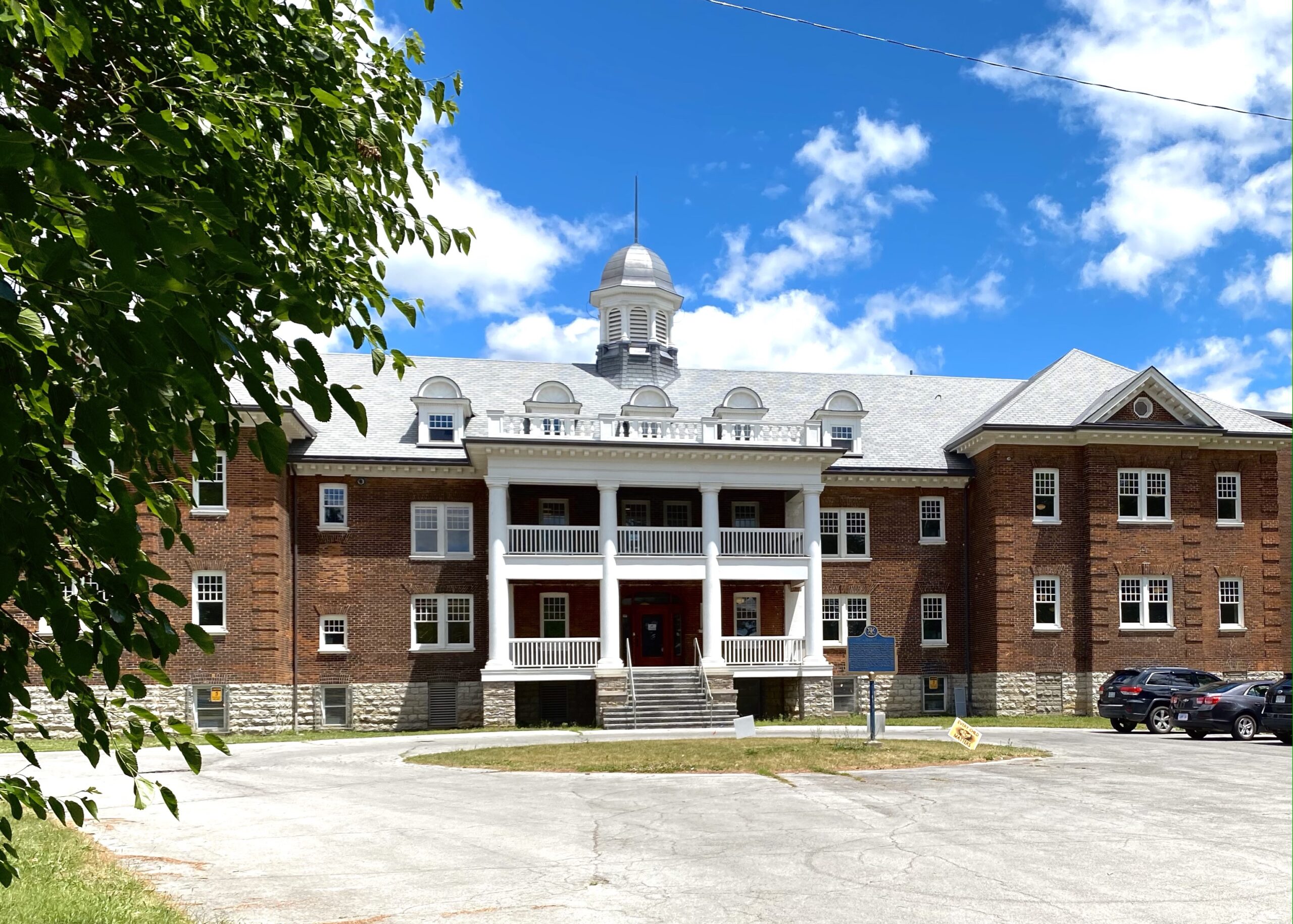Toronto Metropolitan University utilizes educational resources provided by the Woodland Cultural Centre to ensure all journalism students gain a better understanding of the impact of the residential school system.

All of Toronto Metropolitan University’s first-year journalism students will be participating in a virtual tour of the Mohawk Institute Residential School this September. The tour will be followed by a discussion with cultural interpreters from the Woodland Cultural Centre as part of the School of Journalism’s efforts to answer the Call to Action #86.
In 2015, the Truth and Reconciliation Commission released 94 calls to action. Call to Action #86 calls on all journalism and media schools to educate students on the history of Indigenous Peoples, including residential schools.
The Association of Iroquois and the Allied Indians opened the Woodland Cultural Centre (WCC) in 1972 and it stands on the grounds of the Mohawk Institute Residential School. Due to the violence and abuse that were inflicted on Indigenous children at such institutions, most of Canada’s former residential schools have been torn down. Janis Monture, the executive director of the WCC, said survivors of the Mohawk Institute were given the choice whether to keep the building intact, to prevent more pain being inflicted on the community.
“One of the reasons we do what we do at Woodland is to ensure that the stories and the history of this particular residential school are never forgotten and to ensure that in the future this never happens again, to any child. So for us keeping the building is important because you can look at a plaque or watch a film, but you can’t replicate being in the space where it happened,” said Monture.
When you enter the WCC there is a ceremonial speech printed on the wall written in all six of the Hodinohsho:ni languages, highlighting the community’s rich and diverse history. The Haudenosaunee Confederacy consists of six First Nations tribes who united so they could live in harmony and peacefully make decisions.
Throughout the museum, there are life-like exhibitions of how the Hodinohsho:ni governed and lived within their tribes. There is also a variety of traditional beadwork, clothing and tools on display that show what life was like for Indigenous Peoples before the settlers started making a home on Hodinohsho:ni land.
Although the Centre does receive funding from sources such as the Ontario Trillium Foundation, the Canadian Government and the local Indigenous government, donations to the Centre and tours of the residential school provide necessary revenue to keep its doors open.
Karyn Pugliese, executive editor at Canada’s National Observer and a visiting Algonquin journalist at TMU, identified three reasons it’s important for journalism students to learn and visit residential schools. The first is related to properly contextualizing Indigenous issues:
“The intergenerational harm that residential schools caused explains so much about what our communities need today, whether it is restoring languages and culture, supporting parents or dealing with depression and sometimes addiction,” said Pugliese.
The second reason Pugliese believes journalism students need to better understand the residential school system is to allow them the opportunity to reflect on their perceptions of Canada. “Canada’s record on human rights does not live up to its image. The schools split children from their parents to purposely break up families to get Indigenous land. The idea that the schools were about education or for the benefit of Indigenous people is simply revisionism. Recognizing the truth is key to restorative justice and, therefore, reconciliation,” said Pugliese.
The third reason given by Pugliese is that it gives journalism students an understanding of the systemic racism that is present within different Canadian institutions to this day.
“Learning how the residential school system functioned, and continued to function for generations, will help students identify patterns of systemic racism in other institutions such as policing, the child welfare system, land claims and the health care system,” said Pugliese.
The influence of residential schools is still being felt, as the practices of assimilation that were used at these institutions damaged the transmission of traditional cultures and languages within Indigenous communities. The Woodland Cultural Centre is now a place where Indigenous Peoples can learn their languages, promote their art, learn about their culture and history, and be proud of who they are.
“The language classes are purposely placed inside of the former residential school because the children were forbidden to speak their language, so I want to make sure these walls hear it every day,” said Monture.
To learn more about how to book tours and events, go to the Woodland Cultural Centre’s website.
